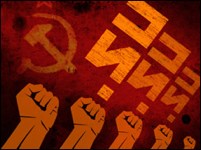Systems's mains characteristics
| Characteristic | Orbiter Value | Buran Value |
| Mass of the system at the beginning, t | 2046 | 2350 |
| Thrust at launch, tf | 3076 | 3568 |
| Specification of the Orbiter | ||
| Mass at launch, t | 109 | 105 |
| Maximum mass at landing, t | 96 | 87 |
| Payload mass, t | 20 | 30 |
| Volume of the crew cabine, m³ | 71 | 73 |
| Dimensional specifications | ||
| Length, m | 34.24 | 36.37 |
| Wingspan, m | 23.79 | 23.92 |
| Height, m | 17.25 | 16.35 |
| Length of the payload bay, m | 18.3 | 18.55 |
| Diameter of the payload bay, m | 4.6 | 4.7? |
| Quantity of flight | 100 | 100 |
| Mass of the structure, t | 68.586 | 62 |
| Heat shield tiles, number | 24000 | 38600 |
| Circular work orbit, km | 185 to 1000 | 250 to 500 |
| Crew | 7 | 10 |
| Total mass of the 1st stage, t | 1180 | 1490.4 |
| Mass of oxygen, t | X | 886.8 |
| Mass of kerosene (РГ-1), t | X | 341.2 |
| Mass of solid fuel, t | 950 | X |
| Pulverulent aluminium powder (combustible), % | 16 | X |
| Perchlorate of ammonium (combustive), % | 69.6 | X |
| Iron oxyde powder (catalyst), % | 0.4 | X |
| Polybutadiene Acrylonitrile or Hydroxyl-terminated polybutadiene (polymer), % | 12 | X |
| Epoxy curring agent (catalyst), % | 2 | X |
| Engine of the 1st stage | ||
| Thrust on the sea level (100% thrust), tf | X | 740 |
| Thrust in vacuum (100% thrust), tf | X | 806 |
| Total mass of the 2nd stage, t | 757 | 776.2 |
| Mass of oxygen, t | ~600 | 602.775 |
| Mass of hydrogen, t | ~100 | 100.868 |
| Engine of the 2nd stage | ||
| Thrust on the sea level (100% thrust), tf | 170 | 147.6 |
| Thrust in vacuum (100% thrust), tf | 213 | 190 |
| Dimensional specifications of the system | ||
| Height, m | 56.14 | 58.765 |
| Width, m | 23.79 | 23.92 |
| Dimensional specifications of the 1st stage | ||
| Height, m | 45.6 | 39.46 |
| Diameter, m | 3.71 | 3.92 |
| Dimensional specifications of the external tank | ||
| Height, m | 46.9 | 58.576 |
| Diameter, m | 8.4 | 7.75 |
| Uses | ||
| 1st stage, flight | 20 | 10 |
| 2nd stage (external tank), flight | 100 (1) | 1 |
| Azimuth of launch, ° | 35-120 | 51-83, 97, 101-104, 110 |
| Minimal duration between 2 consecutive flights, days | 25 | 20 |
In sum, the Soviets' design of the as a modular ELV was in with their traditional emphasis on functionality, and simplicity. The fact that they a new rocket engine, with cryogenic fuel no less, for the Energiya of adapting a previous Soviet rocket to Glushko's political influence at the as well as a Soviet political that could give one individual so power. The Buran's configuration as a reusable spacecraft is largely attributable to factors: the long Soviet history of concepts and the Soviets' desire to the U.S. Shuttle's capabilities by matching design.
First, politics inevitably shapes and often dominates conduct of science and technology. The Shuttle was built and designed the it was for a variety of domestic political reasons. While the Buran also heavily affected by domestic politics, development is one more Cold War of the Soviets competing with the States. During the 1970s, the Apollo-Soyuz Project was the exception that proves rule of superpower competition and the of the two Shuttles conform closely this rule.

